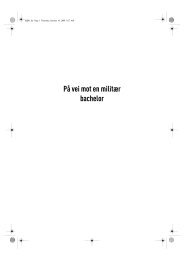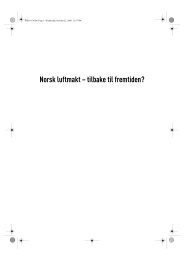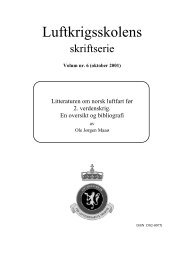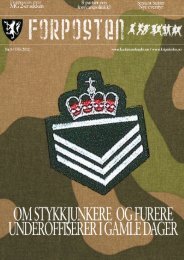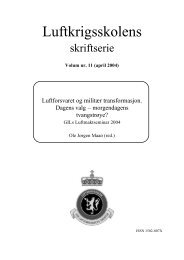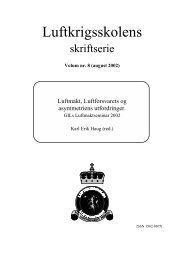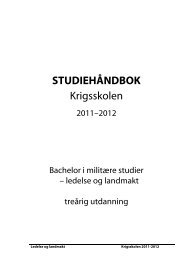Wilhelm Mohr
Wilhelm Mohr
Wilhelm Mohr
You also want an ePaper? Increase the reach of your titles
YUMPU automatically turns print PDFs into web optimized ePapers that Google loves.
<strong>Wilhelm</strong> <strong>Mohr</strong>. On World War II<br />
had learned that an army unit had established some form of HQ at<br />
Røros. There, in the rather chaotic atmosphere of rumours and friction<br />
of war, <strong>Mohr</strong> took command of the Wing on 13 April, at the age of 22.<br />
They operated from there until later that month, performing reconnaissance<br />
missions to map out the German advances on the ground.<br />
Assessing the Wing’s operations, <strong>Mohr</strong> himself – in his usual sober<br />
manner – said: ’I would not say it had any significant usefulness’. 11<br />
By late April it had become clear that South Norway would have to be<br />
surrendered to the German forces, and it was decided that each pilot<br />
could choose whether they wanted to continue their fight against the<br />
Germans in North Norway, or go to Lesja to start preparing for the<br />
journey over to the UK and then continue the fight from there. <strong>Mohr</strong><br />
chose Lesja. By then, the Germans had advanced to Tynset, and on<br />
<strong>Mohr</strong>’s low-level flight towards Lesja from Aursunden, a German bullet<br />
went through the wing of his Fokker and petrol started to poor out,<br />
forcing <strong>Mohr</strong> to make an emergency landing just north of Fokkstua.<br />
After making necessary repairs to the aircraft and procuring fuel by<br />
sledge – he set course for Lesja. <strong>Mohr</strong> landed on Lesjaskogsvannet<br />
(Lesja Woods Lake) on 24 April, in order to link up with (then) Captain<br />
Bjarne Øen, 12 who had established an HQ for the remnants of the<br />
Norwegian Air Arm at Lesja. <strong>Mohr</strong> landed shortly after 18 Gladiators<br />
of the British 263 Squadron had been attacked on the lake, 13 of which<br />
were destroyed. Once landed, he spotted three German Heinkels heading<br />
for him and his Fokker. He jumped out of the aircraft, only to find<br />
himself in deep snow and unable to escape. The Heinkels made three<br />
11 <strong>Wilhelm</strong> <strong>Mohr</strong>, Recollections, unpublished memoirs, Oslo 27 June 2007, p. 32.<br />
12 Adolf Bjarne Øen (1898–1994) is one of the leading figures of the Royal Norwegian Air<br />
Force. He became the Inspector General of the Army Air Arm on 13 April 1940 – four<br />
days after Germany attacked Norway. He played a key role in building up the Norwegian<br />
Air Force in Britain during WWII, and later – as Chief of the RNoAF – in developing the<br />
RNoAF as a separate service after the War. Øen held a number of key positions in his career,<br />
and became Chief of Defence in 1963. Norsk Biografisk Leksikon [The Norwegian Biographical<br />
Encyclopedia] (2005) Oslo: Kunnskapsforlaget, H. Aschehoug & Co (W. Nygaard)<br />
A/S and Gyldendal ASA, Volume 10, pp. 92–93.<br />
14



